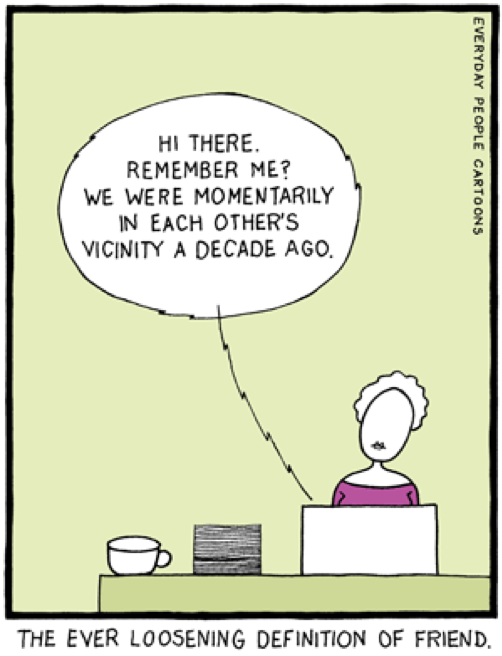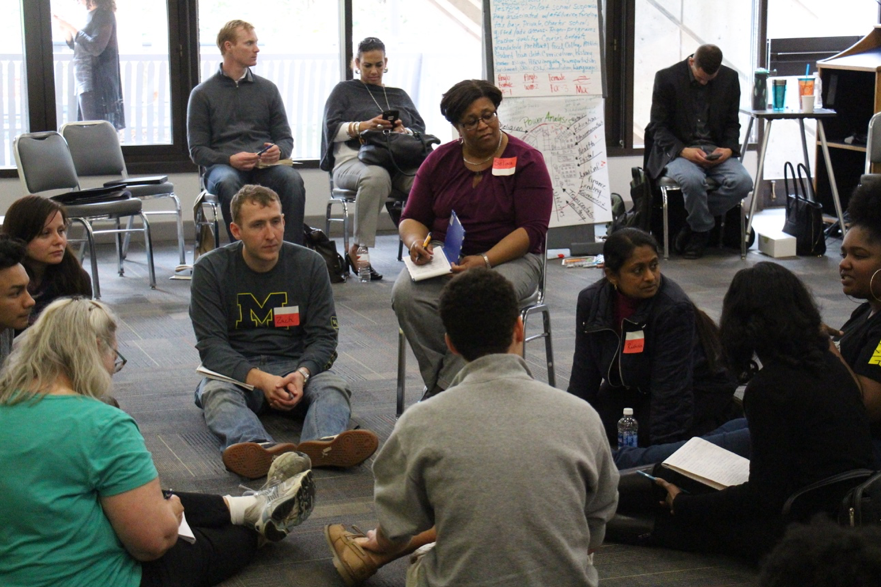In this section, we will define what a relationship is and describe three important characteristics.
8.1.1: Defining ‘Relationship’
 (Image: © Cathy Thorne/www.everydaypeoplecartoons.com; printed with permission for use in I.C.A.T.)
(Image: © Cathy Thorne/www.everydaypeoplecartoons.com; printed with permission for use in I.C.A.T.)
A relationship can be defined as the expectations that two people have for each other based on their previous pattern of interactions (Littlejohn & Foss, 2008). Throughout our lives, we will be involved in a variety of relationships ranging from superficial to intimate. Intimate relationships involve physical and/or emotional intimacy and are characterized by friendship, trust, and love (platonic or romantic). Intimate relationships can include friendships, romantic relationships, and/or familial relationships.
8.1.2: Characteristics of Relationships
In addition to ranging from intimate to superficial, relationships can be characterized as impersonal or personal, voluntary or involuntary, and platonic or romantic (Verderber & Verderber, 2013).
- Impersonal and Personal:
An impersonal relationship is formed with another person in order to satisfy a need or goal. For example, when we interact with a cashier at a grocery store, we are typically engaging in an impersonal relationship. Conversely, a personal relationship “is one in which people care about each other, share at least some personal information, and meet at least some of each other’s interpersonal needs. (Verderber & Verderber, 2013, p. 163).”
- Voluntary and Involuntary:
A voluntary relationship is one in which we choose the person who we interact with, such as in the case of friendships. Conversely, involuntary relationships are imposed upon us and we do not have the choice of whether or not to interact with that person (Jackson-Dwyer, 2014). For example, when we are paired up with a stranger in class to complete a project, then we would be in an involuntary relationship with them.

The relationships we form can be voluntary or involuntary. This means sometimes we choose who we interact with, while others times we don’t, such as in the case of doing small work for a class, training, or seminar.
- Platonic and Romantic:
A platonic relationship is a ‘friendly’ relationship where there is an absence of romance and sex. A romantic relationship occurs when people act on said sexual attraction and/or form a mutual emotional romantic attachment.
When describing relationships, it is important to note that relationships are dynamic, and that these characterizations can and do change. For example, we might initially be in an involuntary relationship with someone because we were paired up to work on a project, but then find out we share similar interests and form a voluntary friendship after the project ends. Or two people may start off as platonic and then become involved in a romantic relationship (or vice versa).